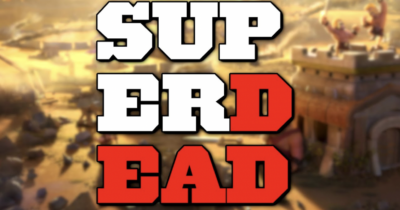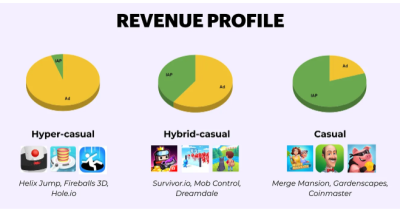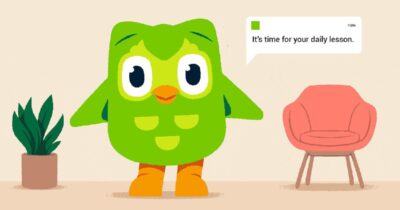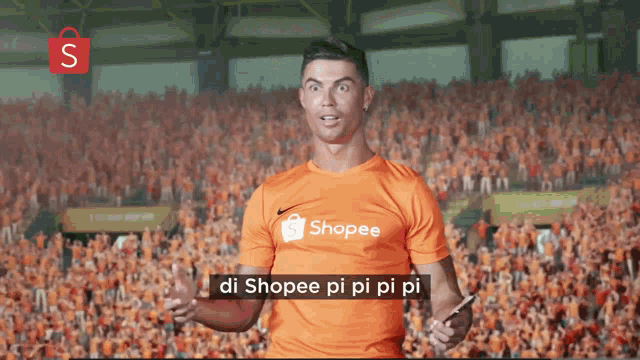
Influencer Marketing Guide for UA: How to Execute in 2024
There was a time when shooting vertical videos was the internet’s biggest sin. Today, TikTok (and its less-sexy copycats, Instagram Reels and YouTube Shorts), is dominating every phone screen across the globe. And where there is attention, there is money to be made for UA Marketers.
As much as you may hate the cringeworthy TikTok dances, there’s no denying the numbers: TikTok was the most popular app globally with 672 million downloads in 2022, only to be followed by Instagram and Facebook. IAB predicts influencer marketing to grow by 25% in 2024.
Remember Mr. Beast’s Squid Game video? Brawl Stars paid $3m to drive 263,000 installs (a 41% week-to-week increase), and an undisclosed amount of in-app purchases.
No shit – social media is not dead – it’s evolving. So throw out whatever preconceived notions you have about influencers, because they are VERY real and can help you drive app downloads today.
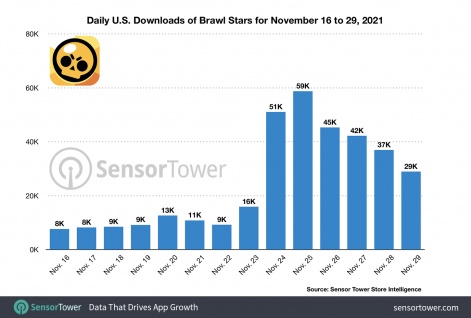
First, Let’s define influencer marketing
Influencer marketing is leveraging a creator’s audience and reputation to sell your product or services. This can range from small creators (like your 8-year-old nephew cleaning carpets) to celebrities like Cristiano Ronaldo selling their soul to Shopee.

Why influencer marketing? Because your brand will never be as cool as them. Also, 69% of consumers trust influencers, friends, and family over information coming directly from a brand.
You’re essentially borrowing the trust and reputation the creator/super model/athlete/comedian/health influencer has built over a period of time to sell your app. The relationships a creator has with their community is something that 99.99% of brands or apps will never be able to achieve.

And from a UA standpoint? Organic content or white-labeled content can be a worthwhile experiment if acquisition costs are much lower than generic, AI-generated ads like the super shitty ones we’ve covered previously.
Now let’s talk strategy. I invited my good friend Mirza Hasanzade, CEO of Paced media to help me craft this influencer strategy for you. He is THE man when it comes to influencer marketing!
Step 1: Know who you serve
The first and most obvious step is knowing who you serve and where they live. What kind of content do they consume? Who do they follow? What are their biggest interests? Do they prefer Beethoven or Biggie?
Mirza: “I’d say that the most important thing is to understand your core audience and build the strategy around that. While content consumption is a good indicator, often you find that your most successful sponsorships come from unexpected & niche channels (channels that aren’t under heavy Influencer Marketing targeting which increases the prices through the roof and have saturated audiences). Focus your budget on 70% safe bets and 30% on experimenting new markets/verticals so you can start scaling outside of saturated audience groups.”
What if you’re marketing to a new country that you have no clue about? Influencers can be your way in.
If you have no clue, start with broad market research. If you have basic demographic data on hand, use it as a starting off point. Age range, location, language, gender, and occupation can help narrow down your choices fairly quickly. If you don’t, try to gather some insight around your competitors and the apps or content those communities are consuming.
Step 2: Sweat the legal stuff
Influencer marketing can get real shady – there’s an indescribable amount of undisclosed sponsorships across the board. Food reviewers being paid under the table (or with a free meal) or product placement in videos that have no business being there in the first place.
In America, the FTC recently started cracking down on food and fitness influencers who weren’t explicitly disclosing their deals. I would suggest covering your own ass, but gauging your level of risk is ultimately you and your creator’s decision. But be prepared to have that conversation before you sign the agreement.
Mirza: “Make sure ad disclosure is always in the contract.”
I would suggest spending some extra time figuring out contracts, payout structure, and timelines to make sure you’re getting the content in time and you’re able to pay the creators on time as well.
Mirza: “Creators can be busy, lazy, change their minds, get struck by a lightning.. Always include the publishing window in the contract with a clause that allows you to terminate the agreement without any penalties. Creators delaying the partnership is one of the most common occurrences.
Avoid paying creators before video is released. Missing tracking links, delayed videos and other mistakes happen fairly commonly and trying to get your money back or getting creators to compensate for the mistakes is very difficult.”
Here are some additional details you may want to negotiate
- How long an organic post will be up
- Will you have the image rights (and for how long?) to promote across your own social media
- Are they a business account? Will they need to be?
- Will you be promoting their original video or will you be reposting it on your own?
- When you want them to share their analytics
- Exclusivity clauses (can they advertise competitors during this period of time?)
Mirza: “Licensing/IP rights increase the cost of promotion between 30-60%. Pre-negotiating the rights without knowing the quality of the promotion produced is risky. Only negotiate the rights after you’ve seen the promotion and it has gone live so you see how successful it was.
Mirza on Exclusivity clauses: “This is actually not common or needed. People see daily tens of ads and they choose the products they enjoy seeing. Negotiating exclusivity clause for certain period of time will increase the cost with minimal impact. Just make sure there are no multiple sponsorships within the same video/post to avoid having two CTAs”
Step 3: Identify the right creator
Now this is arguably the most important part – finding the right creator to work with. You’re going to have to go down the rabbit hole of finding the right type of creators, because not everyone is going to work with you (especially if you don’t have much of a budget).
Mirza: “On average 7 out of 10 creators are going to be either bad or breakeven. 2 out of 10 creators will perform good and 1 out of 10 creators will have amazing results to cover the big chunk of your total budget.
Avoid working with individual creators unless the partnership is very custom made like MrBeast x Stumble Guys (in-game skins, characters, etc.) or Pewdiepie x Opera GX and thousands of other examples that I can share”
Here are the three key things to look out for.
Niche: Does their audience have an interest in your genre of apps? If not directly correlated, does targeting their demographic make sense?
Followers: mean less and less these days as creators are creating for the algorithm rather than their own followers. But having a high follower count is a green flag if they also have positive engagement rates as well.
Mirza: “Never pay attention to followers as its the most vanity metric available in influencer marketing. Reach is what matters and with reach we mean viewership. Some agencies will trick their way around with “millions of reach” but when you open the channel, you see they get 5-10k views and have 2 million subscribers. Always look at the viewership!”
You should only care about the viewership reach so how many people will see my ad. We don’t care about “dead” follower base.”
Engagement rate: are they rage-baiting? Or do they foster a real community? Are they positive or negative? Do they have a ton of views and no comments? That may be a red flag.
Mirza: “Comments & likes on their videos/posts is the easiest way to access the engagement of the creators. Aim to work with channels that have above 3% engagement rate and 99.9% of the time, stay far far away from creators that get below 1.5% engagement rat.”
Here are some other red flags:
- Weird bot-farming comments (like promoting their onlyfans)
- Weird or offensive username handle
- Profile is new without much content
- Stock photos or curated posts rather than original content
- No link to a website or contact information
Mirza:
“High viewership per video with only a few released videos (unless its creators secondary channel). This often means that either creator is using ads to promote their content or they got lucky with algorithm and viewership of the upcoming videos/posts can’t be predicted because of that.
Viewership peaks at the end of the video (with YouTube’s viewership peak feature available on most videos). This happens with verticals that work on a project to show the results at the end of the video. This means that your promotion will be when they skip to the end.
Viewership fluctuations. This can be a big problem on YouTube where creator gets between 10k views and 500k views. Unless you can secure a deal based on 10k viewership (which will 100% not happen), you are risking paying big $$ for a video that ends up getting only 10-20k views. You could do CPM deals but high fluctuation also means that the audience base is not super loyal. They care about the content and not the creator itself. Because they are not loyal to the creator, they are also less likely to do what they ask aka download the game/app.”
Here’s how to source the right creators for you:
- Manually search hashtags on Instagram, X (Twitter), and TikTok
- Manually search keywords and phrases and look at the top performing content
- Search Twitch categories
- Find suggested accounts based on your followers on Instagram
- Look at competitors’ followers
- Use sourcing tools like Tubular, Upfluence, Hypeauditor, Aspire, Influence.co
Mirza: “Work with agencies/companies who have established network in the industry. Will save you tons of time on sourcing and they could bring their expertise to the table as well.”
Step 4: The creatives
There are millions of content ideas you can run like:
- Sponsored post
- Collaborations
- Reviews
- Ambassadors
- Takeovers
- Spark Ads
- Giveaways
- Product placement
- Integrated
- Free products or bonuses
- Discount codes
- Sponsored streams
- Events
Mirza: “Exclusive partnerships (custom in-game/app integrations)”
A/B testing is every UA marketer’s best friend. Experiment with different formats, and make the creative as flexible as possible. If you have the opportunity, speak with the creator directly to see what they think would perform well with your audience. But at the same time, understand what types and formats of ads have worked well for you and advise accordingly.
Mirza: “Avoid stale sales pitch like promotions. Highlight important, interesting & fun features that could be good to talk about and let the creators work on the promotions that fits their style the best. Keep A/B testing the CTAs, feature highlights and assets to know what to keep or what to remove. Brief itself, assets and CTA play a huge role in the success of the campaign.”
Make it candid
There is a negative stigma attached to mobile game ads. Play into it. Don’t take yourself too seriously. Make fun of mobile game ads. Whatever it is – just don’t make it feel like an ad or hide that it’s an ad.
Read my guide on 11 killer UA tips about creatives here.
Everybody but UA managers love top-of-funnel campaigns that just measure impressions. You want conversions, which is why the offer has to be enticing. Let the creator speak in their own voice, and incentivize their audience to download by providing an enticing offer – 500 bonus coins, exclusive characters, etc. Or make it a limited time offer to add some urgency.
Step 5: Craft an offer
Now that you have everything in place, it’s time for the outreach process. Make the email short and sweet, and experiment with different value propositions. It doesn’t have to be a straight-cash deal – you can offer free products, in-game benefits, or unlimited access to your app for life.
Also be sure to introduce yourself and ensure your emails are trustworthy. Have your signature and important links throughout the email – keep it professional, friendly, and trustworthy. Here’s an example:
Hi Influencer,
My name is Matej and I am the Unicorn at Matej Empire, LLC and am so excited to be reaching out on behalf of the mobile game Rise: Unicorn Legends for the upcoming Holiday campaign!
I got this video on my FYP and knew I had to reach out.
We are interested in partnering with you to create original content that would be posted on your TikTok and IG Reels. Based on your profile and content, we think you are a great fit for the brand – we are looking to work with our top performing creators from this campaign in 2024 if you are interested as well 🙂
We’re looking to kick-off next week and would love to connect with you soon! If interested, would you mind answering the following questions?
- Can you confirm your rates to create a 30 second, 60 second, and 90 second video?
- Do you have any current exclusivity contracts?
- Do you allow content amplification for 1 – 2 months?
Thank you! I’m so excited to work with you,
Matej
Mirza: “This email format has by far the highest open and reply rate from the past 10 years of doing this. Also include the product name and $$ in the subject line if its a paid promotion. Creators get tens if not hundreds of emails each week so they will not open the email and read it unless the subject line is catchy and promises something. So many creators get offered free towels, caps, etc. to make a 2min promotion for the company…..
Hey [Creator],
Mirza here from Paced Media!
Our client, [Clients Name] (Mobile Game/App, PC game, Fitness product, etc.) would like to work with you. Here are the offer details:
Product: [Insert Name & hyperlink]
Promotion type: [Integration, dedicated, etc.]
Release date: [Between Dates X & Y]
Deal type: [Fixed fee, CPM, CPA, etc]
Payout: [Amount]
Let me know if you are interested!
Regards,
Mirza”
Lastly, ALWAYS FOLLOW UP. Creators get emails left-and-right. You’re leaving so much opportunity on the table if you don’t follow up and gently remind them of your offer 🙂
Step 6: Test and measure
Level 1: Creator Analytics
The easiest and first layer of data you can get is the analytics provided by the creator. You can ask them to screenshot their analytics or have them share them directly from the platform with you.
Most influencer campaigns drive a sharp spike in installs and impressions and taper off within a few days, so you can measure the brand lift when the campaign launches to get a general idea of how effective it was.
Mirza: ”7 day window is the most ideal window but the larger the creator is, bigger the longtail is so you might want the analytics for 14, 30days or even more. Creators who generate millions of views per video have their content appear on search results for years to come. We’ve seen as large as hundreds of installs each week 1 year after the promotion has gone live.”
Level 2: Custom links and QR codes
You can provide creators unique URLs to embed on their profiles or Linktree to help with attribution. Custom QR codes are also a good option, but perform better on YouTube or out-of-home advertising. Use a custom branded hashtag like #HappyFarmingHoliday so you can measure impressions and brand lift. Lastly, you can create a custom promo code that creators can share so their audience gets a custom discount while directly supporting their favorite creators.
Level 3: Data Tools
To get a complete picture of how your influencer marketing campaigns perform, consider data tools. App Store Analytics can be a good start to understand downloads, ratings, and rankings within the timeframe your campaign ran. ASO tools like App Annie, App Radar, Sensor Tower can get you a bit more insight here.
You can also gauge the reviews that come in during that period of time. It’s not a perfect science, but AppTweak, AppFollow, and AppBot can help you get a pulse on user sentiment.
A mobile measurement partner can help you generate QR codes and deep links that tie back to the rest of your marketing campaigns for more accurate / less-disjointed attribution.
Metrics you can measure
Don’t just launch a campaign and pray you draw a few installs. The more you measure and define your success, the better off you’ll be. Whether or not your first campaign is a failure, adequately measuring your marketing can give you learnings to improve in the future. Here are a few metrics you can get started with:
- Impressions
- Installs
- Brand mentions
- Pieces of content produced (including stitches, responses)
- Engagements (likes, comments, shares)
- Unique link clicks
- QR code scans
- App store ratings
- Average traffic before and after the campaign
Mirza: “Average traffic before and after the campaign = This is very important. Purely tracked installs are rarely profitable as big chunk of traffic comes outside of the tracking links. This is why its best to look into 7days traffic prior to promotion release and 7days after.”
Mirza: “Additionally:
- Views to installs %
- Quality of users (LTV & Retention changes). Often LTVs are 2-3x higher on influencer marketing so you need to take that into consideration when forecasting the results.
- D90 & D365 ROI forecasts”
Avoid doing these stupid things
Getting de-influenced
If your ad is too generic or cringey, there’s a chance that you’re going to get flamed for it online. There’s always room for backlash, so make an extra effort to be candid / have an action plan if your videos get negative attention.
Controversial creators
Strong engagement might be enticing, but online reputation matters. Like a lot. Make sure you do your research and look up the influencer online before risking your brand name by working with a controversial figure.
Not repurposing your content
Content today has a very short shelf-life. If the campaign is doing well, continue promoting it across multiple channels and platforms to extend your reach. Test out different captions, intro shots, music, and messaging if the creator is comfortable with it.
Not communicating effectively
One of the most frustrating and difficult parts of running an influencer campaign is the management. Creators can be slow to respond, not send their first drafts on time, or even half-ass the entire thing. Set out clear deadlines that they’re okay with, and communicate and follow-up consistently. Give them creative freedom, but be firm on your deadlines.
Not staying in touch
Let’s say your campaign does extremely well – their audience engaged with it and it drove installs. Stay in touch with them for future campaigns. Consider even creating a package deal for a lower rate – ask for 6 videos for 6 months. It guarantees them work while you’re locked in at an affordable rate.
Mirza: “Re-hires are often the safest and most effective influencer marketing campaigns. Retention is one of the most important metrics for apps/games so longer you can keep them in your app/game, more you’ll monetize.
Consider hiring good performers on a monthly or bi-monthly basis while keeping track on the results and making sure that your offer is adjusted to cover the audience saturation.”
Anything we missed?
Oh wow! You made it here! You must be very engaged. I like that type of players… Ehm, people!
Please share this article with your industry friends. It would mean the world to me.
Also, subscribe to my newsletter. It’s so honest it might actually annoy you. If you are easily annoyed, please don’t subscribe. Subscribe now to podcast


